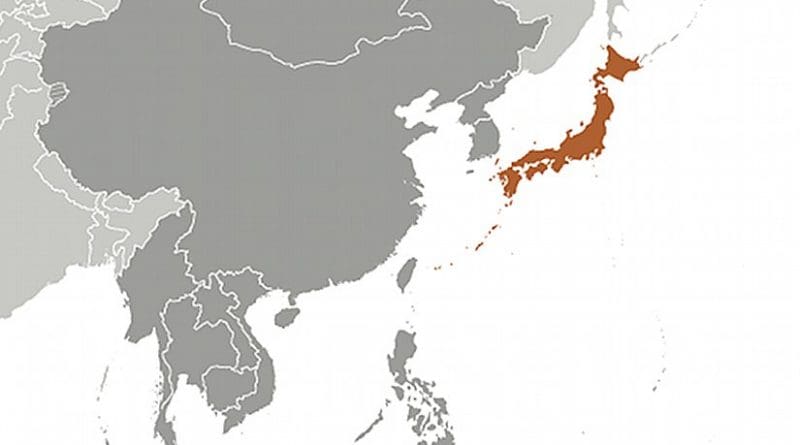Japan Nuclear Energy Profile: Hydrocarbon Consumption To Increase – Analysis
By EIA
On Friday, March 11, a 9.0 magnitude earthquake struck off the coast of Sendai, Japan, triggering a large tsunami. The earthquake and ensuing damage resulted in a shutdown of 6,800 MW of electric generating capacity at four nuclear power stations that have a total capacity of 12,000 MW (some plants previously offline for maintenance).
Other energy infrastructure such as electrical grid, refineries, and gas and oil-fired power plants were also affected by the earthquake. Japan likely will require additional natural gas and oil to provide electricity, however power demand may be dampened at least in the short term as a result of the destruction of homes and businesses. According to some industry estimates, fuel oil and natural gas consumption could increase by up to 238,000 bbl/d and 1.2 Bcf/d, respectively, depending on the combination of fuel substitution.
Japan has few domestic energy resources and is only 16 percent energy self-sufficient. Japan is the third largest oil consumer in the world behind the United States and China and the third-largest net importer of crude oil. It is the world’s largest importer of both liquefied natural gas (LNG) and coal. In light of the country’s lack of sufficient domestic hydrocarbon resources, Japanese energy companies have actively pursued participation in upstream oil and natural gas projects overseas and provide engineering, construction, financial, and project management services for energy projects around the world. Japan is one of the major exporters of energy-sector capital equipment and has a strong energy research and development program that is supported by the government, which pursues energy efficiency measures domestically in order to increase the country’s energy security and reduce carbon dioxide emissions.
Total primary energy consumption in Japan is over 22 quadrillion British thermal units. Oil is the most consumed energy resource in Japan, although its share of total energy consumption has declined from about 80 percent in the 1970s to 46 percent in 2009.
Coal continues to account for a significant share of total energy consumption, although natural gas and nuclear power are increasingly important sources.
Japan is the third largest consumer of nuclear power in the world, after the United States and France. Hydroelectric power and renewable energy account for a relatively small percentage of total energy consumption in the country.
Nuclear
Japan currently has 54 operating nuclear reactors with a total installed generating capacity of around 49 GW, making it the third-largest nuclear power generator in the world behind the United States and France.
EIA preliminary data shows that Japan produced 266 BKwh of nuclear-generated electricity in 2009. The government stated plans to increase nuclear’s share of total electricity generation from 24 percent in 2008 to 40 percent by 2017 and to 50 percent by 2030, according to the Ministry of Economy, Trade and Industry.
Though, the March 11 earthquake could impact the growth of nuclear energy at least in the short and medium term. Over 12,000 MW of nuclear capacity at the Fukushima, Onagawa, and Tokai facilities ceased operations after the earthquake and tsunami, and some of the reactors could be permanently damaged after emergency seawater pumping efforts.
Japan has a full fuel cycle setup, including enrichment and reprocessing of used fuel for recycling. Japan has promoted nuclear electricity over the years as a means of diversifying its energy sources and reducing carbon emissions, emphasizing safety and reliability.
The World Nuclear Association reports there are currently 2 nuclear plants under construction and another 12 in planning stages. According to the Federation of Electric Power Companies in Japan, nuclear power makes a great contribution to Japan’s energy security by reducing its energy imports requirement by approximately 440 MMbbl/d per year and, because nuclear energy emits no CO2, it reduces Japan’s CO2 emissions by about 14 percent per year.
Hydro and Other Renewables
Japan had installed hydroelectric generating capacity of 22 GW in 2008, accounting for about 8 percent of total capacity. The Japanese government has been promoting small hydropower projects to serve local communities through subsidies and by simplifying procedures. There are also a number of large hydropower projects under development, including the 2,350-MW Kannagawa plant due online in 2017 and the 1,200-MW Omarugawa plant due online in 2011.
Wind and solar power are being actively pursued in the country and installed capacity from these sources has increased in recent years to about 3.9 GW in 2008, up from 0.8 GW in 2004. However, they continue to account for a relatively small share of generation at this time.
Conventional Thermal
In 2008, Japan had about 179 GW of conventional thermal electric generating capacity. According to Japan Electric Power Information Center, there are currently 60 thermal power plants, and 5 more are under construction: 2 using LNG and 3 using coal for generation. The country’s aging oil-fired power plants are used primarily as extra capacity to meet peak demand, and less than 10 percent of electricity produced currently is oil-generated. The number of natural gas-fired power stations is increasing in Japan and roughly 26 percent of electricity is natural gas-fired. Coal remains an important fuel source and accounts for roughly 28 percent of electricity generation. Domestic coal production came to an end in 2002 and Japan imported 182 million short tons in 2009, for which Australia was the main supplier. New, clean coal technologies are being pursued in the power sector, however, in efforts to meet environmental targets.
Source: EIA

